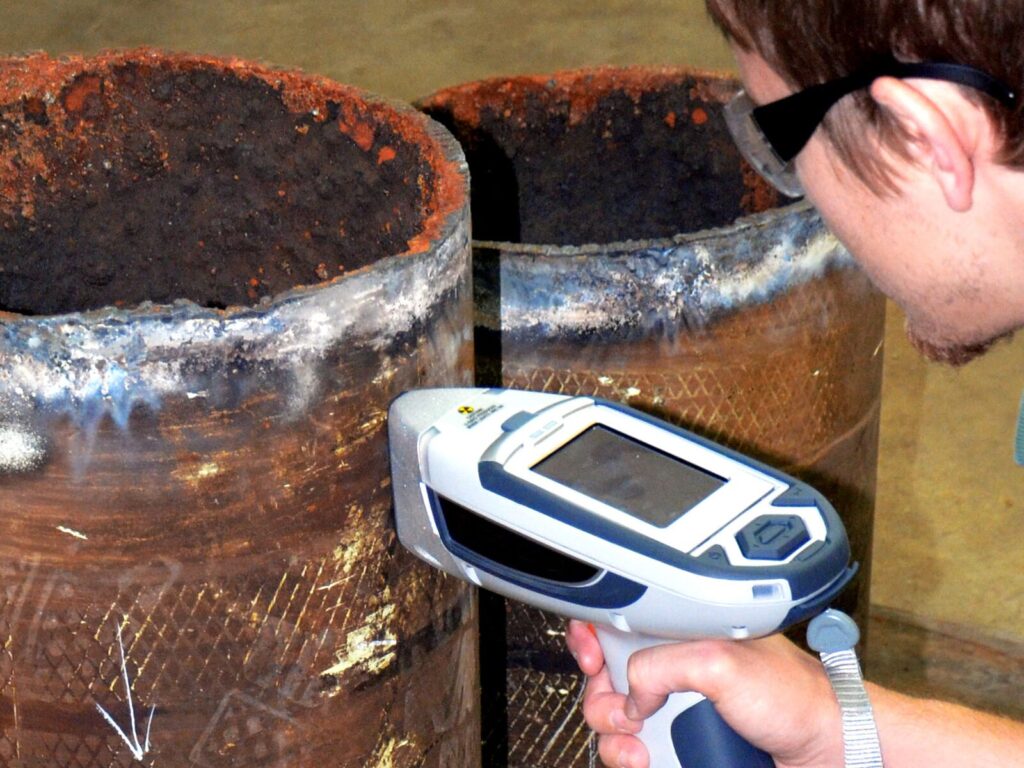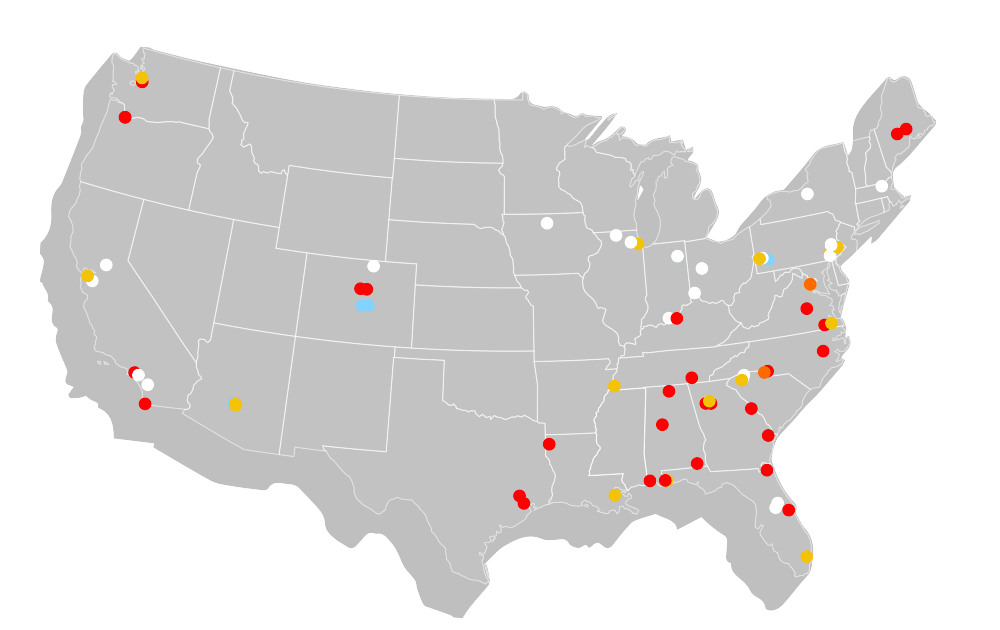ATS knows the importance of material identification, which is why our metallurgy lab strives to identify unknown materials in samples with two advanced techniques. Using EDS and XRD, we can determine the elements and compounds in a wide range of samples.
Energy Dispersive Spectroscopy (EDS)
A complementary technique to our full chemical analysis capabilities, Energy Dispersive Spectroscopy (EDS) enables Applied Technical Services’ metallurgists to identify and analyze small contaminant particles, metal chips, corrosion products, and platings.
This powerful tool, also called energy dispersive X-ray, EDX, and EDAX, uses the focused scanning electron beam in the electron microscope to excite the atoms of an unknown material, then identifies the elements present by discriminating the characteristic X-rays emitted by the sample, similar to a fingerprint.
Mapping of the elemental concentrations across samples is possible, which often aids in failure analysis, and provides semi-quantitative data for research studies. When present in high concentrations, corrosive ions such as chlorine or sulfur can be detected. The technique is performed in accordance with the guidelines provided in the ASTM E1508 procedure.
X-Ray Diffraction (XRD)
Further enhanced material identification is made possible by our X-ray diffractometer. XRD can identify the crystal structure (the physical arrangement of the element atoms) of a material. In this way, the actual compounds present can be identified, as opposed to just the elements identified by EDS (i.e. iron as a metal vs. iron as an oxide).
ATS follows ASTM D934 guidelines in performing XRD analysis. The XRD technique is extremely useful in corrosion failure analysis, verification of metallurgical phases, reverse engineering of coatings, and contaminant identification.
The diffractometer is capable of analyzing standard powder samples with approximate packed volumes the size of a dime, metallurgical mounts, and certain coatings, depending on the geometry of the substrates. The computer-driven material search utilizes the ICDD diffraction pattern database used by most universities, giving access to hundreds of thousands of reference patterns.
About Us
ATS has provided high-quality testing services since 1967. Founded outside Atlanta, Georgia, ATS now leads an expanded Family of Companies (FoC) with dozens of locations from coast to coast. Our expertise includes metallurgical and chemical analysis, mechanical testing, nondestructive inspections, forensics, and consulting engineering.
We maintain several ISO/IEC 17025:2017-accredited labs and an ISO 9001:2015 registered quality management system. Our labs perform a wide range of testing and inspection services. To learn more about our metallurgical capabilities, click here.
Contact Us
Schedule material identification testing with an ATS lab. Call +1 (888) 287-5227 or complete a request webform today. If you have any questions about our capabilities, our customer service representatives will gladly connect you with our experts.



